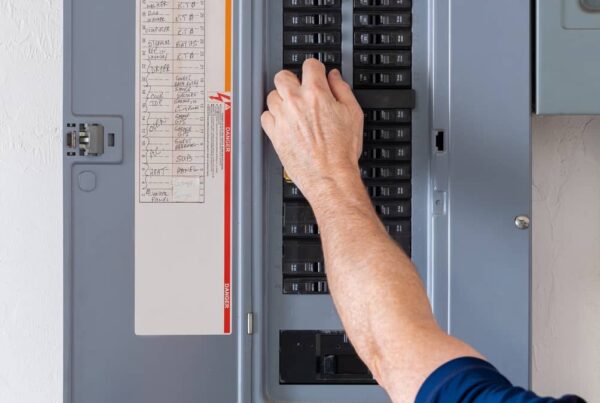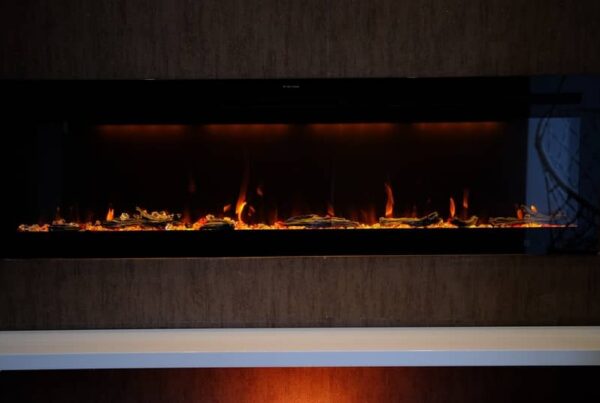
Cloth covered wires in homes were typically installed in homes from 1920’s to the 1960’s. Cloth covered wiring is still prevalent in today’s homes when homeowners are unaware of the fire hazards or already have insurance on the home. On the other hand, cloth will need to be replaced during a home sale process.
What is Cloth Covered Wiring?
Cloth-covered wiring is just that! Cloth, covered, wires. Today we use a plastic/rubber known as Romex. Cloth wiring looks like the featured image of this post. You can recognize it by the braiding, as well as, the fraying that tends to happen at the ends.
Cloth wiring may be in homes older than the 1920s in the form of Knob and Tube wiring.
What are the hazards?
This type of wiring has several issues that can lead to safety concerns for homeowners. They are as follows:
- Cloth wiring frays at the ends. – This can lead to potential fire hazards, heat exposure, and exposed wiring.
- The cloth may contain asbestos. – Asbestos is hazardous to breathe in.
- Poor insulator. – Nowadays, the cloth has lost its ability to hold in heat. Today’s standards are much higher.
- Could be lacking grounding. – Homes today are grounded, that is, if there is an arc the electricity flows to the “ground” rather than a human.
You can see with all those concerns, it is understandable how something could cause a fire overtime. Especially if rodents are chewing on the cloth insulation!
Essentially, cloth wiring is outdated and often unprofessionally repaired which makes it unsafe.


Fire Hazards and Insurance
Due to the issues noted above, insurance companies will not insure homes with cloth wiring. The cloth wiring will have to be replaced with today’s standards of wiring.
Why it becomes an issue during the home buying process
When someone attempts to buy a home and obtain insurance they are required to have a four-point inspection completed in Florida. The four-point will report on cloth wiring and therefore, the insurance companies will require replacement before completing an insurance policy on the home.
In rare cases, you may find an insurance company willing to accept a policy with cloth wiring. However, expect much higher insurance premiums.

Replacement of Cloth Wiring
Cloth wiring in homes at the end of the expected installation date typically only have 1 to 2 circuits that have the cloth wiring. This means the home contains 1 cloth wire from the breaker to the object (in most cases, it is the dryer or oven).
If you are handy and familiar with electrical equipment, by all means do it yourself! Just be sure to turn off the electricity first!
Hiring a professional
If your home has multiple circuits of cloth wiring, it may just be easier to hire an electrician. An electrician will charge depending on the size of the house and how many circuits will have to replaced. In most cases, you can expect to pay a few hundred dollars for a few circuits. If your home has knob and tube, expect to pay a few thousand. Angies List has an article more about cost.
Concluding
Are you concerned about cloth wiring in your home? If you believe you have cloth wiring, call a reputable electrician. Feel free to comment below or contact us with your questions!



